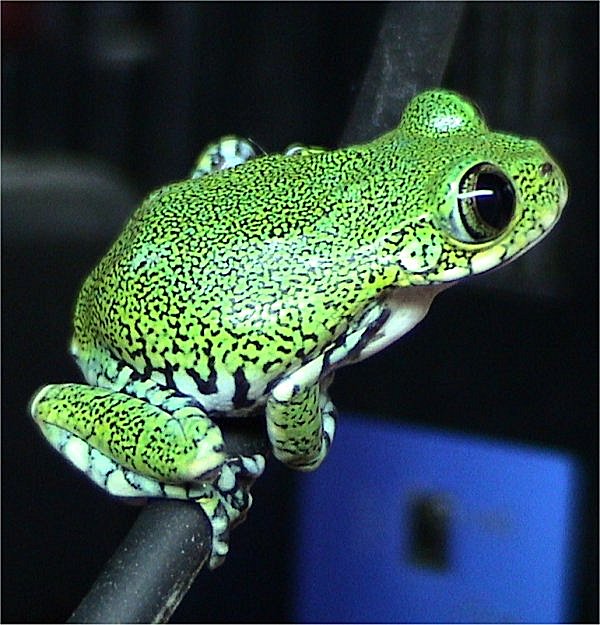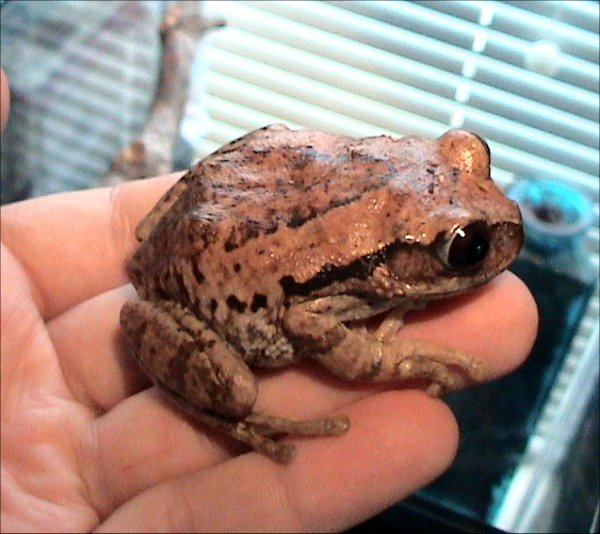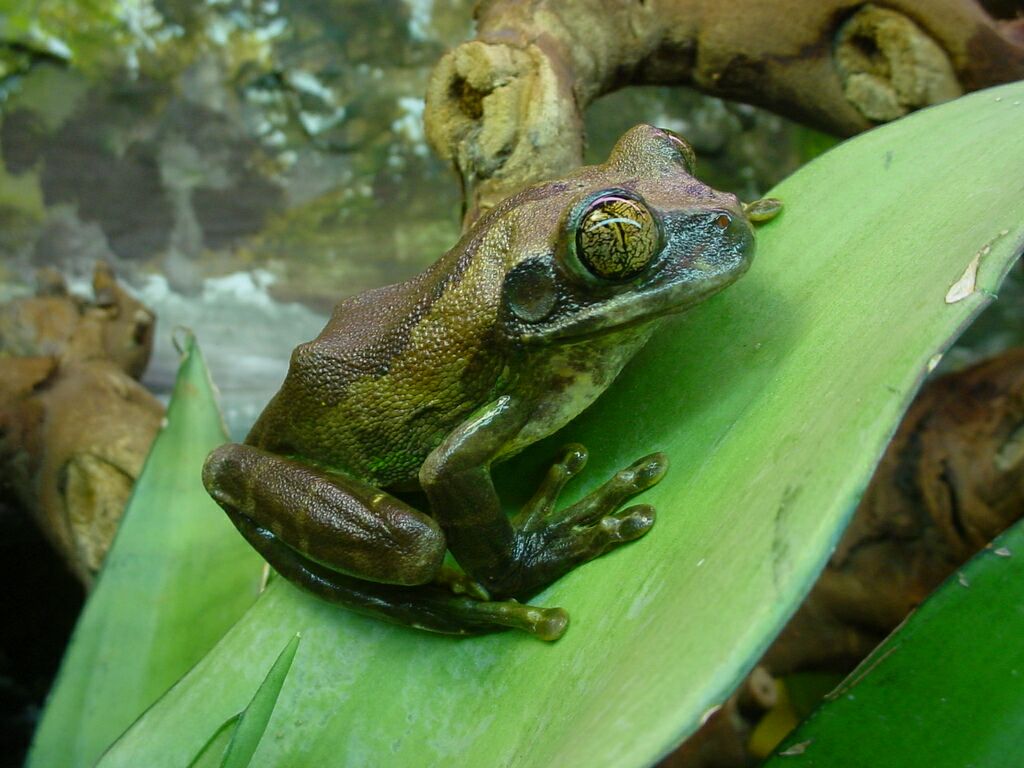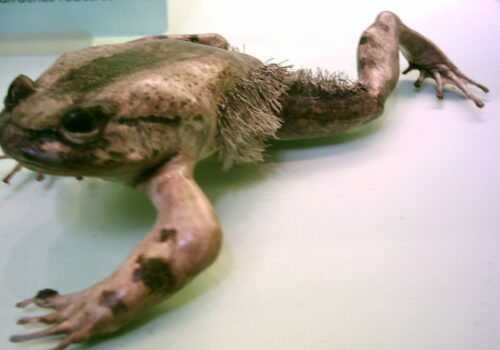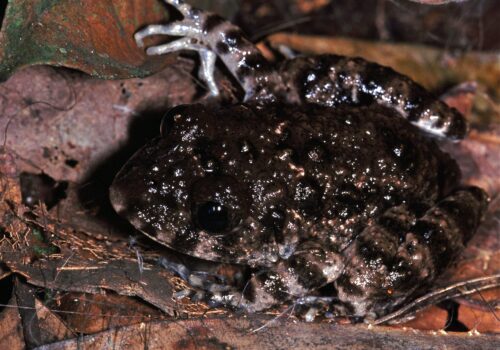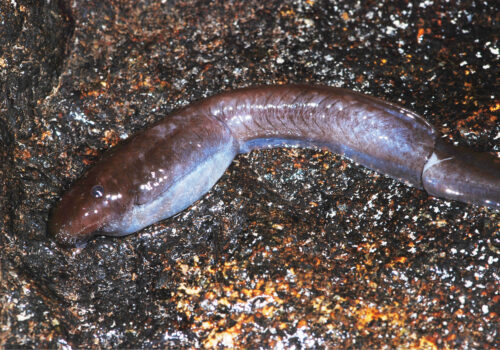- Introduction: Unveiling Nature's Jewel – Leptopelis vermiculatus
- Taxonomy and Classification
- Natural Habitat: The Emerald Heartland of Leptopelis vermiculatus
- Physical Characteristics: Nature's Artistry in Color and Form
- Behavior and Life Cycle: Secretive Serenades and Hidden Nurseries
- Ecological Role: Tiny Guardians of the Rainforest Canopy
- Threats and Conservation Status: Protecting a Forest Jewel
- Cultural and Scientific Significance: Celebrating Nature’s Masterpiece
- Conclusion: A Call to Cherish and Protect
Introduction: Unveiling Nature’s Jewel – Leptopelis vermiculatus#
On a moonlit night deep in the lush montane forests of Tanzania, amidst the rich symphony of insects and nocturnal calls, a melodious trill resonates from the foliage. Hidden within the dense canopy is one of Africa’s least-known treasures—the Peacock Tree Frog, scientifically known as Leptopelis vermiculatus. Adorned in exquisite greens, golds, and browns, this remarkable amphibian exemplifies evolution’s artistry, capturing the hearts and imaginations of naturalists worldwide.
Often overlooked because of its elusive lifestyle, the Peacock Tree Frog not only symbolizes the biodiversity of East African forests but also serves a crucial ecological role as both predator and prey. From its enigmatic breeding chords to its mesmerizing camouflage, each facet of Leptopelis vermiculatus‘ life is a testament to nature’s complexity. Join us as we venture into the vibrant world and intriguing existence of this fascinating amphibian.
Taxonomy and Classification#
The Peacock Tree Frog, Leptopelis vermiculatus, is a proud member of the Arthroleptidae family, an assemblage of African frogs known for their remarkable vocalizations and arboreal lifestyles. First described by the pioneering zoologist George Albert Boulenger in 1909, the genus Leptopelis comprises over 50 species found predominantly in forests across sub-Saharan Africa.
This species sits firmly within its genus, distinguished from closely related species like Leptopelis flavomaculatus by subtle differences in coloration and the distinctness of its calls. Genetic analyses ongoing today continue to illuminate relationships within this fascinating family, painting a more comprehensive picture of their evolutionary history.
Natural Habitat: The Emerald Heartland of Leptopelis vermiculatus#
A Geographical Portrait#
Tucked within the lush, mountainous forests of eastern Tanzania, primarily the Usambara, Udzungwa, and East Uluguru Mountains, Leptopelis vermiculatus thrives amidst the verdant canopies and mist-shrouded valleys. Here, altitude and climate collaborate, crafting ecosystems characterized by persistent humidity, moderate temperatures, and a phenomenal botanical abundance—conditions ideal for amphibians.
An Arboreal Lifestyle#
The Peacock Tree Frog demonstrates a distinctive affinity for the rainforest canopy’s inner chambers, often favoring leafy perches several meters above the forest floor. Epiphytic bromeliads, moisture-laden mosses, and dense vines create sheltered habitats where these amphibians reside and reproduce undisturbed. Unlike many ground-dwelling frogs, Leptopelis vermiculatus rarely descends to ground level, indicating an impressive adaptation to arboreal existence.
This vertical separation from terrestrial predators and competitors is a clever ecological strategy, one that ensures the frog’s continued survival and a delicate niche balance within these forested habitats.
Physical Characteristics: Nature’s Artistry in Color and Form#
A Kaleidoscope of Camouflage#
The physical appearance of Leptopelis vermiculatus is undeniably captivating. Averaging around 4 to 6 centimeters in length, these agile amphibians display a remarkable array of greens, golds, bronze, and browns, with marbled or vermiform patterns twisting elegantly across their backs. These intricate markings resemble the patterns of tree-bark lichen and foliage, bestowing impeccable camouflage and shielding the frog from predators’ prying eyes.
Most notably, their large eyes—a burnished golden hue punctuated by striking dark horizontal pupils—shine with nocturnal brilliance, adapted exquisitely for hunting in varied lighting conditions of the forest twilight.
Anatomical Adaptations for Arboreal Agility#
Equipped with smooth, moist skin that assists in moisture retention and respiration, the Peacock Tree Frog’s anatomy is optimized for life high above ground. Its long limbs and delicate, adhesive toe pads grant remarkable climbing agility, allowing graceful vertical ascents or acrobatic leaps between branches. These adaptations strengthen their position in an arboreal niche, attending to their unique survival needs high in Tanzania’s forest canopies.
Behavior and Life Cycle: Secretive Serenades and Hidden Nurseries#
A Nighttime Predator Amongst the Leaves#
Predominantly nocturnal, Leptopelis vermiculatus emerges from its leafy retreat at dusk, urged by hunger and ancestral instinct. The species maintains a insect-based diet, expertly capturing moths, beetles, and other arthropods drawn towards the verdant abundance of the canopy at night. Leveraging stealth and patience, its keen eyesight allows accurate, rapid strikes upon oblivious prey, making it a formidable predator in its size class.
A Melodious Courtship Dance#
Mating season transforms the forest canopy into a choral symphony. Male Peacock Tree Frogs engage in vocal competitions, aiming to attract females and establish territory. Their calls—a rich, musical trill resonating through the forest air—are distinct enough to differentiate between individuals, reflecting genetic fitness and vitality.
From Tadpole to Canopy Acrobat#
Female frogs delicately deposit their gelatinous clutches on moist leaves or in temporary water-filled hollows within branches, bromeliads, or cavities high above the forest floor. Upon hatching, tadpoles undergo initial aquatic development in these arboreal nurseries, sheltered from terrestrial predators. After weeks of metamorphosis, juvenile frogs emerge fully developed, prepared to navigate the tree canopy and uphold their niche in forest dynamics.
Ecological Role: Tiny Guardians of the Rainforest Canopy#
As both predators of insects and prey to birds, reptiles, and larger amphibians, the Peacock Tree Frog occupies a crucial intermediate niche, ensuring insect populations remain balanced and offering nutrition to larger forest inhabitants. Importantly, their presence acts as a bio-indicator, reflecting the forest’s ecological integrity: declines or fluctuations often signify underlying disturbances, whether climate shifts or habitat degradation.
Threats and Conservation Status: Protecting a Forest Jewel#
Despite inhabiting relatively remote, inaccessible habitats, Leptopelis vermiculatus faces real threats impacting amphibian populations worldwide. Habitat loss through deforestation, agricultural encroachment, logging activities, and climate instability pose significant challenges. Currently, the International Union for Conservation of Nature (IUCN) classifies this species as Least Concern; however, scientists caution this could change rapidly with continued pressure from human activity.
Efforts such as protected area expansion, long-term ecological research, sustainable forestry practices, and public education programs remain crucial to preserving this species—and indeed, the whole delicate ecosystem it signifies.
Cultural and Scientific Significance: Celebrating Nature’s Masterpiece#
Although relatively obscure culturally, the Peacock Tree Frog holds immense scientific value. Its unique ecology informs our understanding of arboreal life strategies and evolutionary adaptations. Additionally, its sensitivity to forest conditions and climate changes makes it an exceptional research subject for ecological and environmental scientists.
Conclusion: A Call to Cherish and Protect#
Leptopelis vermiculatus—Tanzania’s Peacock Tree Frog—is far more than an attractive amphibian; it embodies nature’s artistry, ecological complexity, and evolutionary resilience. Its vibrant existence in the canopies serves as a continued call-to-action: advocate for protecting Africa’s rainforests, support conservation initiatives, and spread awareness of the essential interconnectedness of all life.
As stewards of our shared global ecosystems, it falls upon us to secure a harmonious future for species such as the Peacock Tree Frog. Their continued serenades into the forest night are not just about survival; they are a hopeful hymn reminding us of the immeasurable value contained in our natural world.
